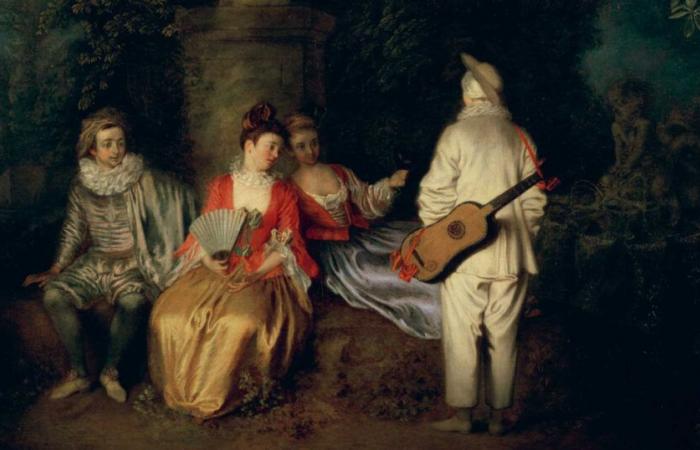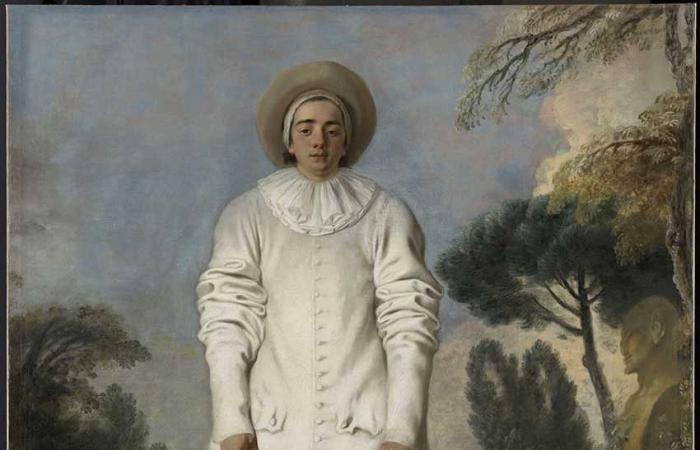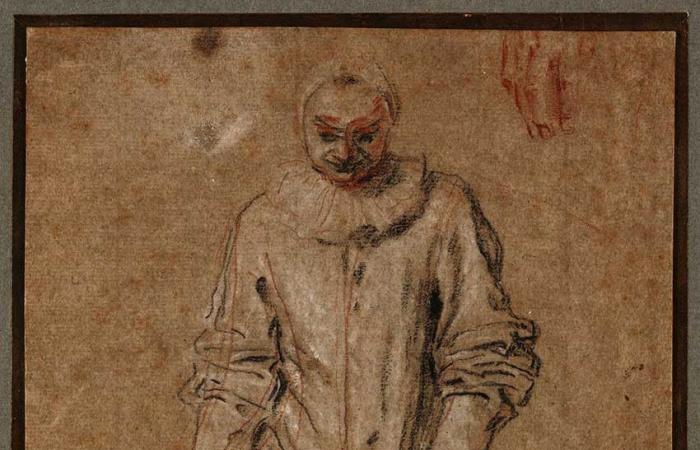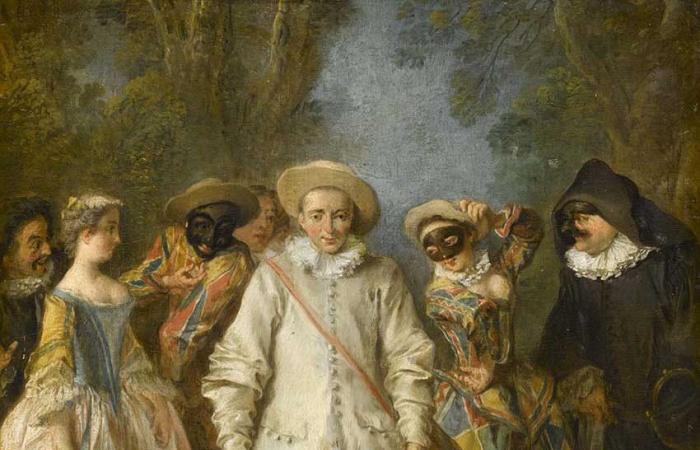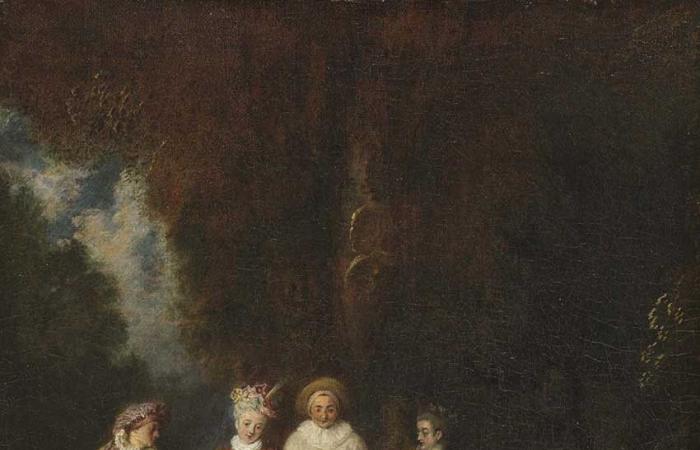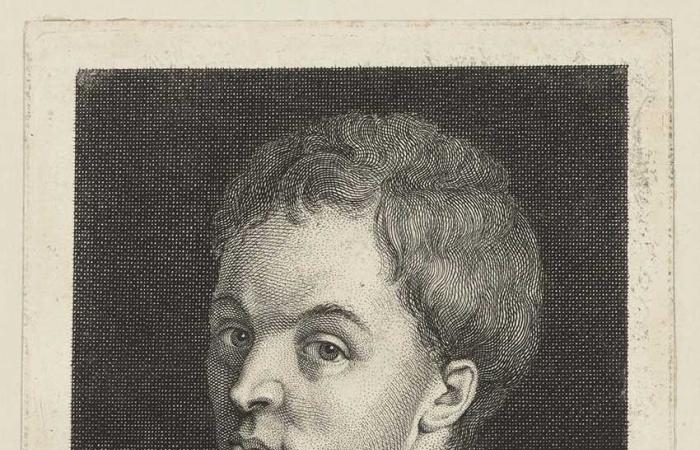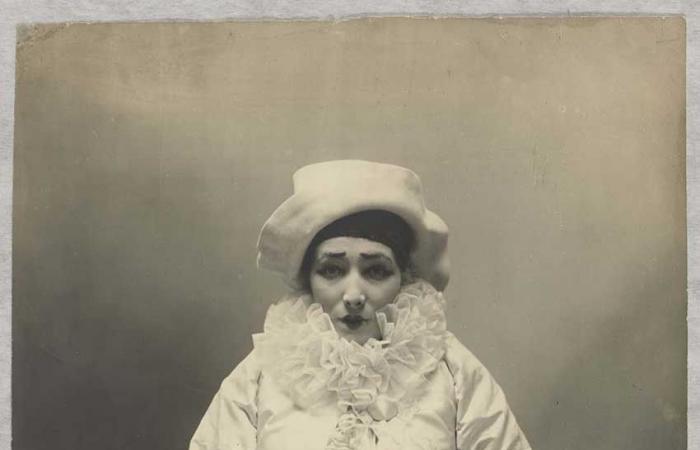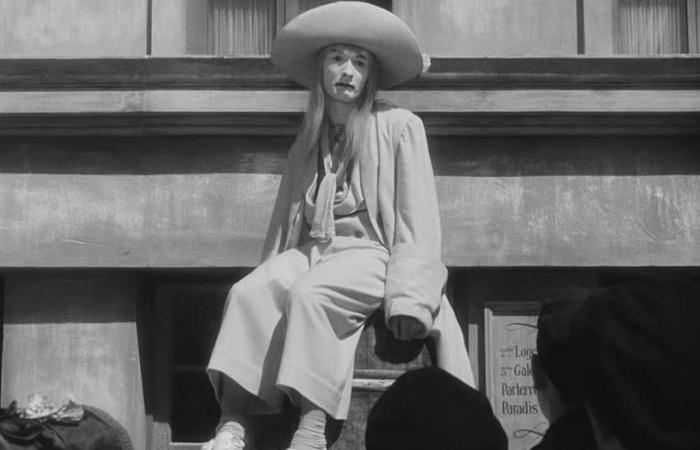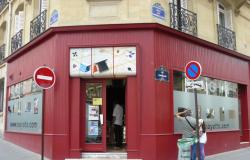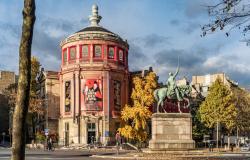« This painting alone deserves a monograph or an exhibition. », wrote Pierre Rosenberg in 1984. Thanks to the very erudite presentation of this iconic work by Guillaume Faroult, chief curator in the Department of Paintings, at the Louvre Museum (“See Watteau again. A comedian without a reply. Pierrot, dit le Gilles”, from October 16, 2024 to February 3 2025), the wish formulated by the former President and Director of the Louvre has been beautifully granted! Few paintings have, it is true, exerted such fascination on artists and writers as this luminous canvas, exceptional in many respects.
In the pantheon of masterpieces
Wasn't its first owner Dominique-Vivant Denon, this colorful character who served in turn as an artist, a man of letters and director of the Napoleon Museum before it was called the Louvre? ? Since its attribution in 1826 to Antoine Watteau (1684-1729), the master of “fetes galantes” with such a light touch, the painting has entered the pantheon of masterpieces of Western painting, without anyone truly know the circumstances of its discovery nor the precise meaning of its iconography…
Antoine Watteau, Pierrotformerly known as Gilles, around 1719, oil on canvas, 184 × 155 cm, Paris, Louvre Museum Paintings department © RMN – Grand Palais (Louvre Museum) / Mathieu Rabeau
« Watteau is a very important artist who, despite his early death, was widely copied and engraved during his lifetime […]. This painting will not escape the proliferation of copies despite its enigmatic subject. », explains Guillaume Faroult who had already devoted a study to it in 2007 during the exhibition dedicated to the collector Louis La Caze, its ultimate owner who donated it to the Louvre. However, no faithful copy of the Gilles was made during the 18th century.
A cryptic meaning
By its unusual format (1.84 by 1.55 m today, the painting having been cut on its four sides) and its unusual iconography (“stiff as an i”, the main character stares us straight in the eye) , the work in fact escapes all the conventions of its time. Formerly titled the Gilles (named after this intrigue ringleader who had his hour of glory after the 1720s), the painting was renamed Pierrotsince its main character is now clearly identified as the naive and good-natured valet born on the stages of the Comédie-Italienne and who became the star protagonist of the Théâtre de Foire.
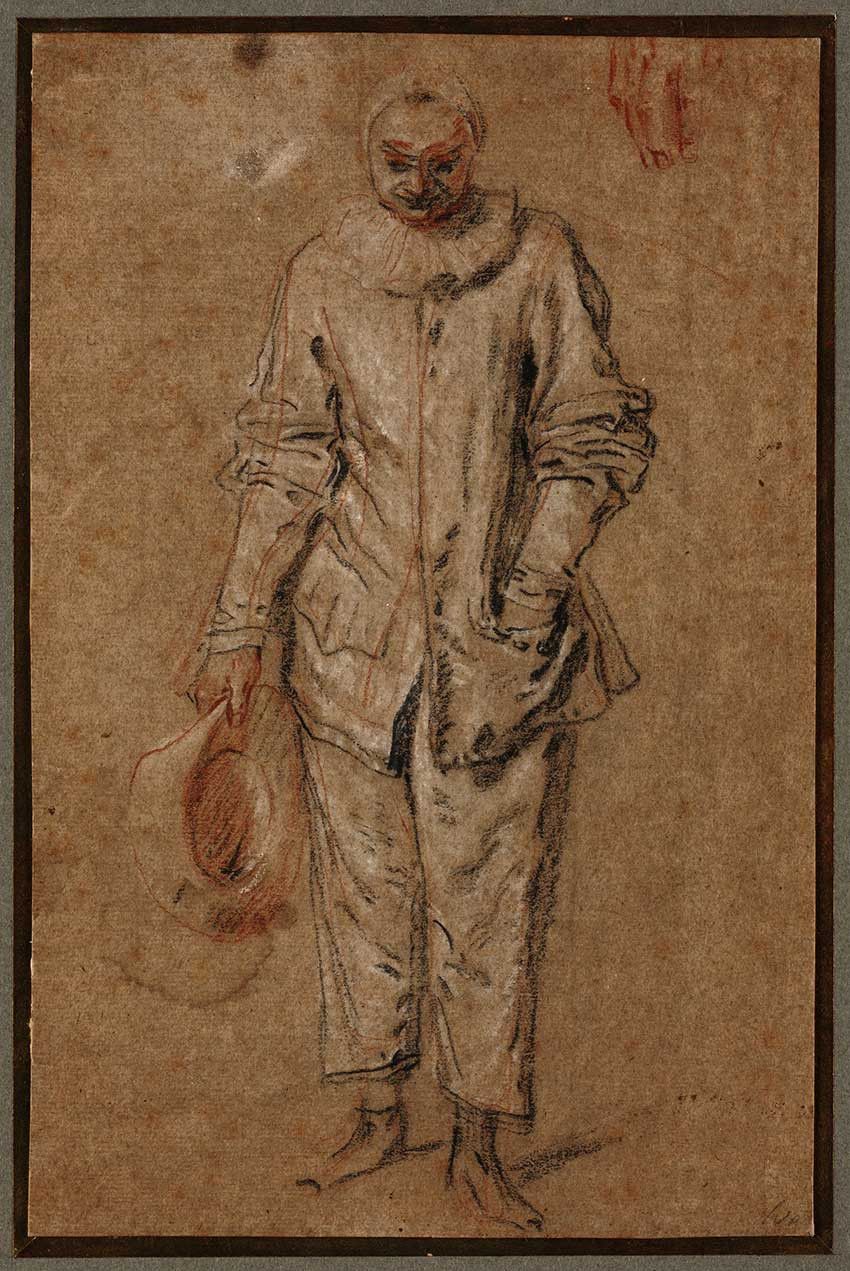
Antoine Watteau, Pierrotcirca 1717, sanguine, black stone and white chalk, 24 × 16 cm, Haarlem, Teylers Museum © Teylers Museum
One question tormented the art historian, however. For what obscure reason did Antoine Watteau, a great theater lover, decide to have this mute and somewhat awkward valet coexist on the same canvas with his too-short pants and his dangling arms (he usually serves as a foil for the mischievous Harlequin!) with this mocking character dressed in dark that the painter's contemporaries had little difficulty in interpreting as Crispin, the Machiavellian character of the Comédie-Française?

Nicolas Lancret The Actors of Italian Comedycirca 1725, oil on wood, 26 × 22 cm, Paris, Louvre museum, Department of Paintings © GrandPalaisRmn (Louvre museum) / Stéphane Maréchalle
Guillaume Faroult suggests interpreting this enigmatic painting as a barely disguised allegory of the struggle between noble theater and popular theater. At the time of his execution, around 1719, the Parisian theater troupes were in fact forced to close and had to go into exile in London. By condemning his Pierrot to silence under the mocking eye of his rival from the Comédie-Française, is Watteau taking sides with one against the other?
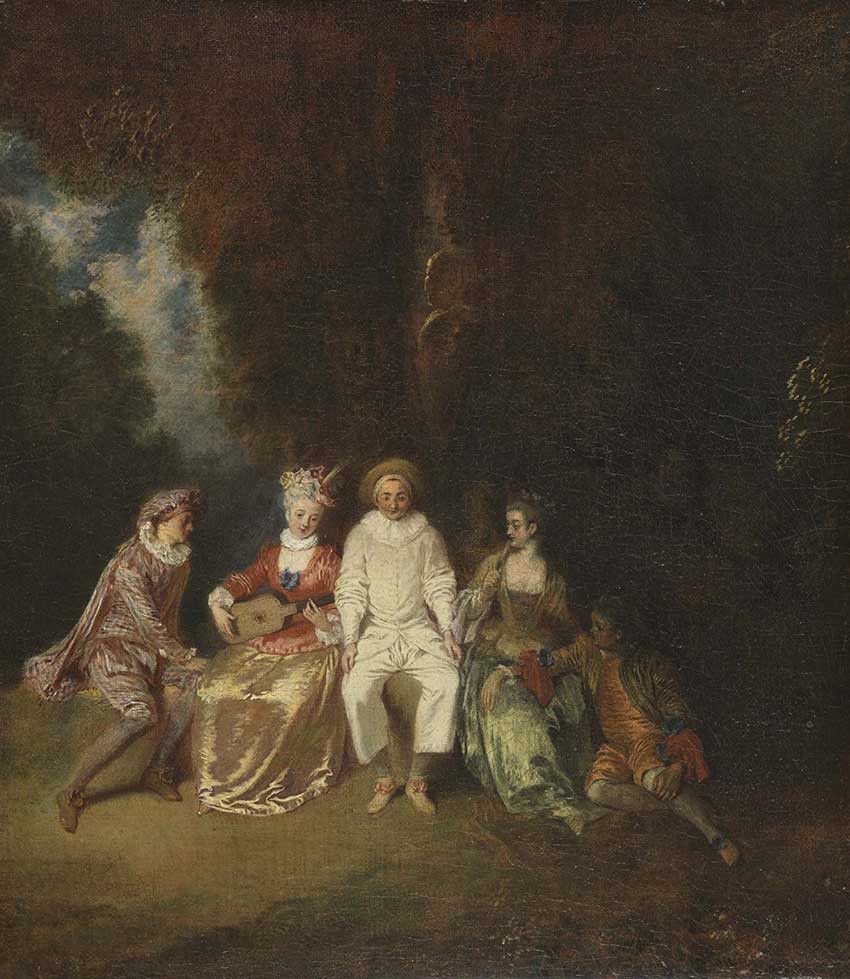
Antoine Watteau, Pierrot contentvers 1712- 1713 ?, huile sur toile, 35 × 31 cm, Madrid, Museo Thyssen-Bornemisza © Museo Nacional / Thyssen-Bornemisza
Furthermore, should we recognize in the character of Crispin, a bit grimacing, a disguised self-portrait of the painter, personification of the very singular condition of the artist in the 18th century? The exhibition thus reveals an engraving by Benoît Audran after Portrait of Watteau drawn by himself in his bed (around 1727, Bnf, Arsenal) which presents a disturbing resemblance to the valet with the smirk…
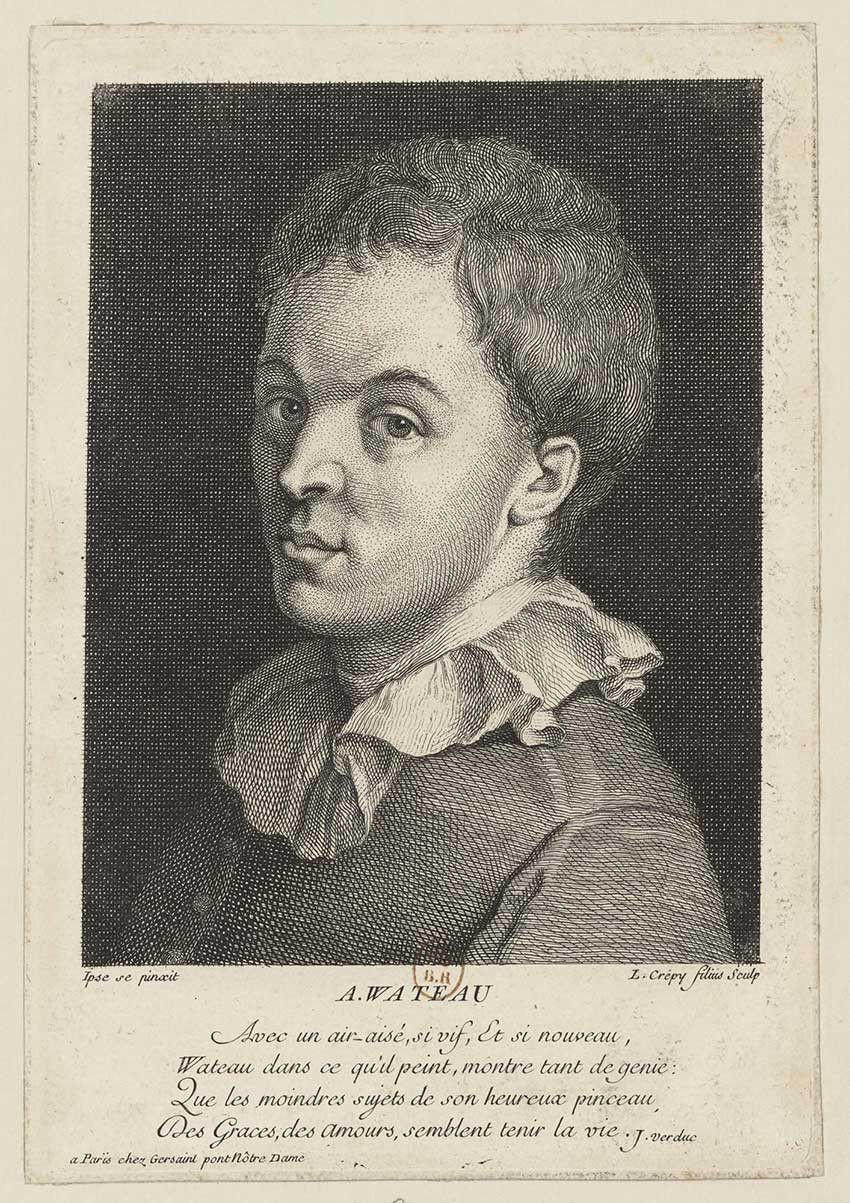
Louis Crépy after Antoine Watteau, Self-portrait of Antoine Watteaucirca 1727, 22.2 × 13.5 cm, burin and etching, Paris, BnF, Prints and Photography department © Bibliothèque nationale de France
Beyond these hypotheses masterfully developed in the catalogue, one cannot fail to be disturbed by the art of “true lying” of this painter who excelled at blurring the lines by placing in an ideal landscape characters from theater seeming to emerge from the pit, like Momus, this god of mockery wearing a crest (probably assimilated to the figure of the Fool), this donkey with a preposterous presence (traditional symbol of stupidity or fun), or even this couple of lovers, as if escaped from a comedy.
A lasting posterity
« The world is a theater, the theater is a world », the protagonists of this mysterious work seem to whisper in our ears. No coincidence that artists, poets and writers never stopped appropriating this polysemous canvas to nestle it with their fantasies! While the very character of Pierrot was adorned from the 19th century with an androgynous grace tinged with melancholy that the most illustrious actresses (from Sarah Bernhardt to Greta Garbo) will remember, Watteau's work at the same time fertilizes the inspiration of the greatest painters.
![Atelier Nadar [Paul Nadar]Sarah Bernhardt in “Pierrot assassin”, pantomime by Jean Richepin, 1883, photograph, 35 × 25 cm, Paris, BnF, Prints and photography department © Bibliothèque nationale de France](https://euro.dayfr.com/content/uploads/2024/11/26/de5e9f3720.jpg)
Atelier Nadar [Paul Nadar], Sarah Bernhardt in “ Pierrot assassin », pantomime by Jean Richepin1883, photograph, 35 × 25 cm, Paris, BnF, Prints and Photography department © Bibliothèque nationale de France
The evocation of the posterity of the painting could not, however, be complete without the poetic presence of Jean-Louis Barrault playing the role of Baptiste Deburau in the very beautiful film Children of Paradise by Marcel Carné (1945). Like a dream brother of Watteau's Pierrot, the actor dressed in white emerges, like an apparition, fragile and lunar at the same time. And it's absolutely magical…
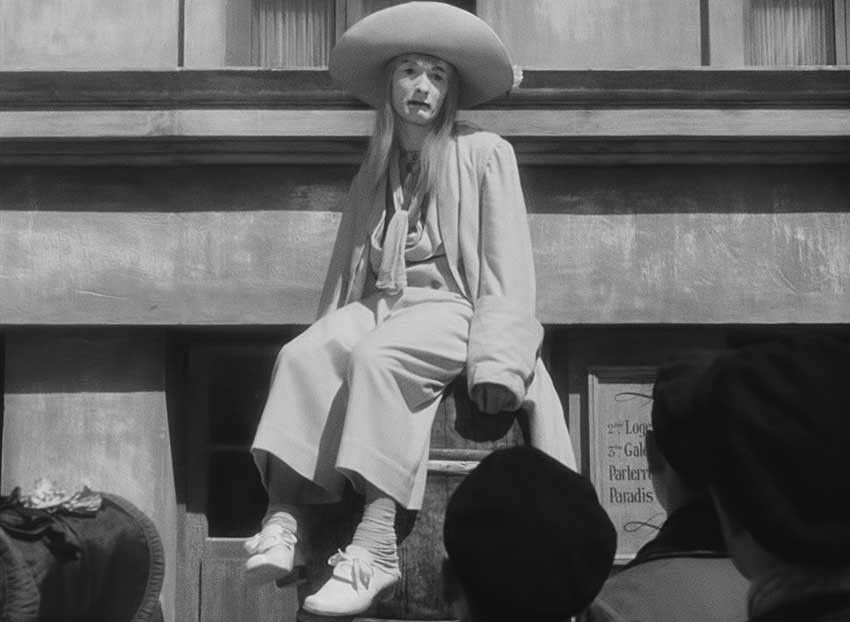
Jean-Louis Barrault in the role of Baptiste Deburau in the scene of the parade in front of the theaterextract from the lm by Marcel Carné, dialogues and screenplay by Jacques Prévert, Les Enfants du paradis, 1945, 182 min © 1945 – Pathé Films
“See Watteau again. Pierrot known as Gilles. A comedian without reply »
Louvre Museum, Sully wing, level 1, Chapelle room (room 600)
Until February 3, 2025.
Catalog of the exhibition under the direction of Guillaume Faroult, co-published Musée du Louvre/Liénart, 240 pages, 150 illustrations, €39.
Information and reservations on the website www.louvre.fr and on www.louvre.fr
Trailer: “Regards sur Pierrot”

